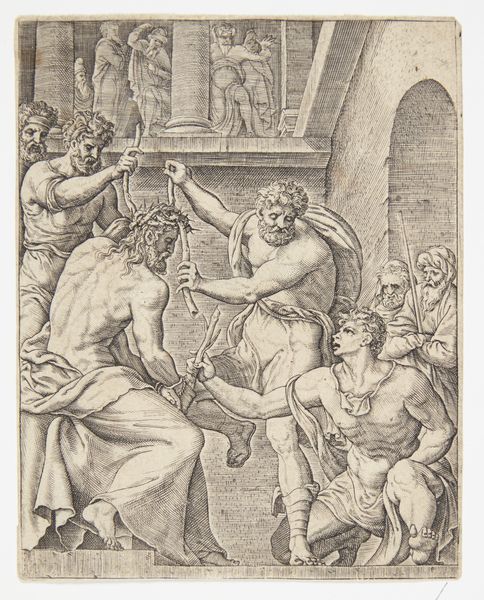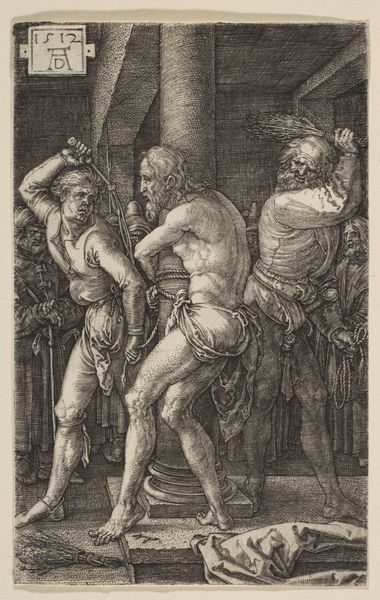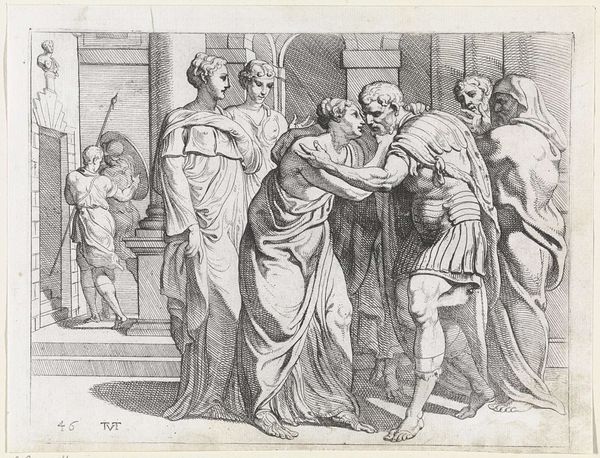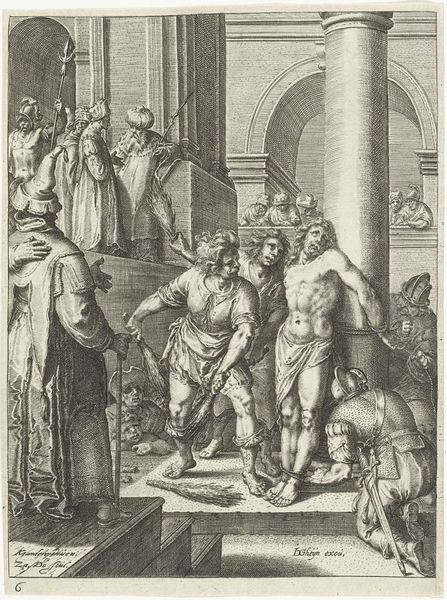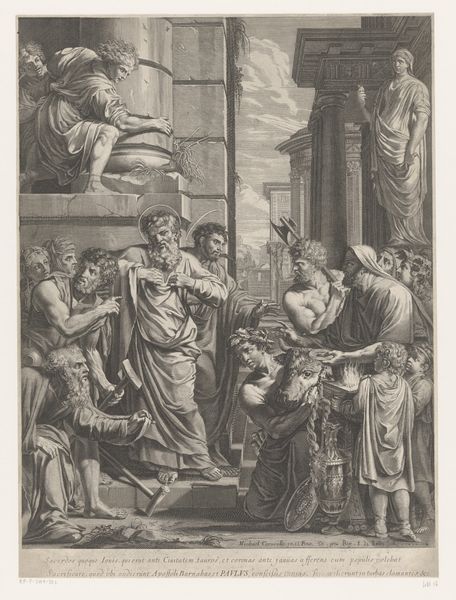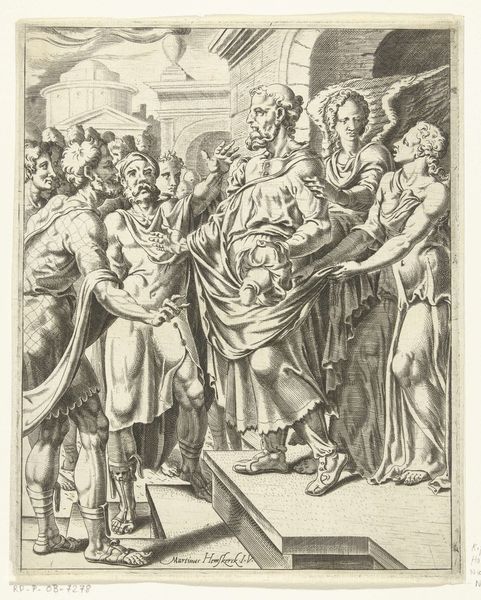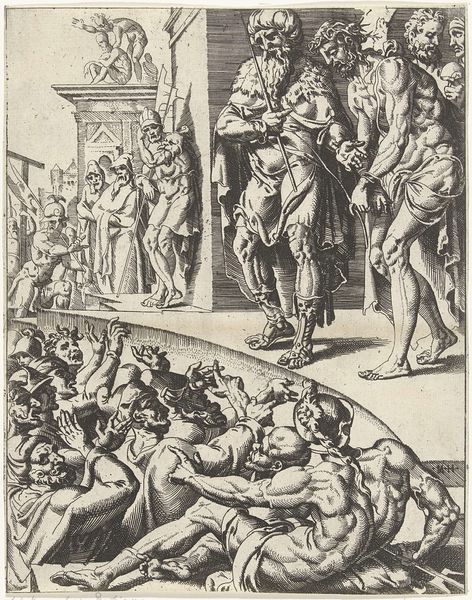
Soldiers, one shown frontally and holding a sword, at right a soldier with his back turned and holding a cup, four soldiers standing behind them with standards and spears, after the lost frescoes by Polidoro da Caravaggio on the façade of the Milesi Palace in Via della Maschera d'Oro, Rome 1650 - 1700
0:00
0:00
drawing, print, intaglio, pen, engraving
#
drawing
#
narrative-art
#
baroque
#
pen drawing
# print
#
pen illustration
#
intaglio
#
figuration
#
pen
#
history-painting
#
engraving
#
sword
Dimensions: sheet: 6 13/16 x 14 11/16 in. (17.3 x 37.3 cm) plate: 6 1/8 x 3 5/16 in. (15.5 x 8.4 cm)
Copyright: Public Domain
Editor: Venturini's Soldiers, created sometime between 1650 and 1700, depicts a scene brimming with military might, rendered in incredible detail through intaglio, engraving, and pen. There's such an imposing sense of power, amplified by the close, almost claustrophobic composition. How do you interpret this concentration of imagery, especially considering the work’s historical context? Curator: The density is key, isn't it? This print translates a lost fresco –a facade even– meaning it was originally public, designed to impress. Soldiers, swords, standards… these aren’t just figures; they are symbols of power, civic duty, and, potentially, a specific political agenda. What’s particularly intriguing is how Venturini preserves this symbolic language across mediums and time. Editor: So the transfer of a fresco onto a print is significant in itself? Curator: Absolutely. The original fresco by Polidoro da Caravaggio was on a palace façade in Rome, so this print ensures its survival as a cultural artifact but also broadens its audience, extending the memory of whatever event or ideal this represents. What do you make of the specific attributes given to each figure? Editor: The central figure has a sword, of course. The wreath suggests victory or leadership. The urn… could it be a reference to lineage or legacy? Curator: Precisely! The symbols intertwine. The eagle may recall Rome, authority… The imagery speaks of virtues and strength that have persisted from the time of the Roman Empire. Considering that palaces are also the physical home of important families or institutions, is it possible that such images could represent claims to the prestige of historical virtue, for example? Editor: So it’s not just about war, but about history and legitimacy… it's a fascinating use of visual language. Curator: Precisely! Seeing how these symbols and narratives are recycled and repurposed is an ongoing dialogue across generations, reminding us of what we choose to remember and how that influences our present.
Comments
No comments
Be the first to comment and join the conversation on the ultimate creative platform.
